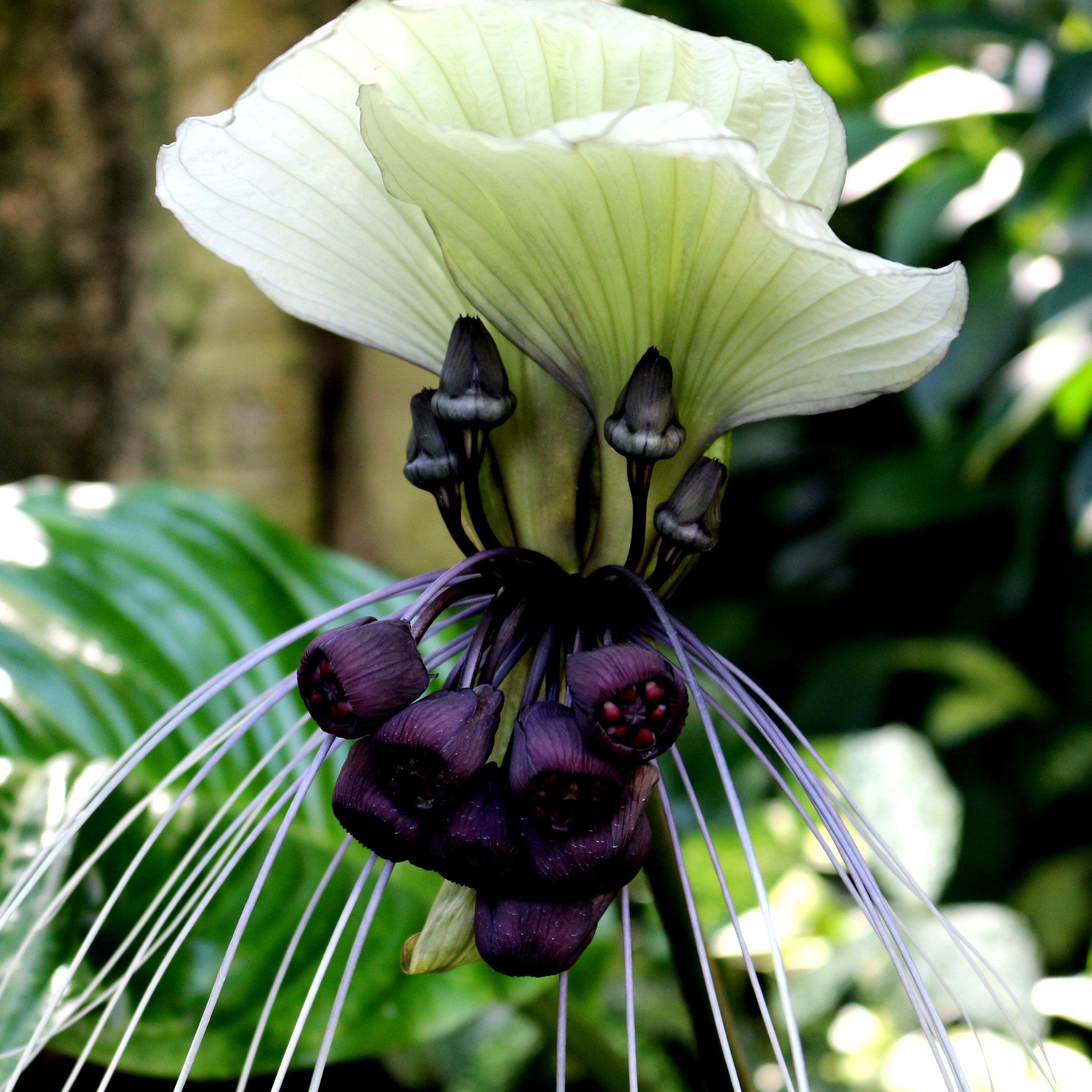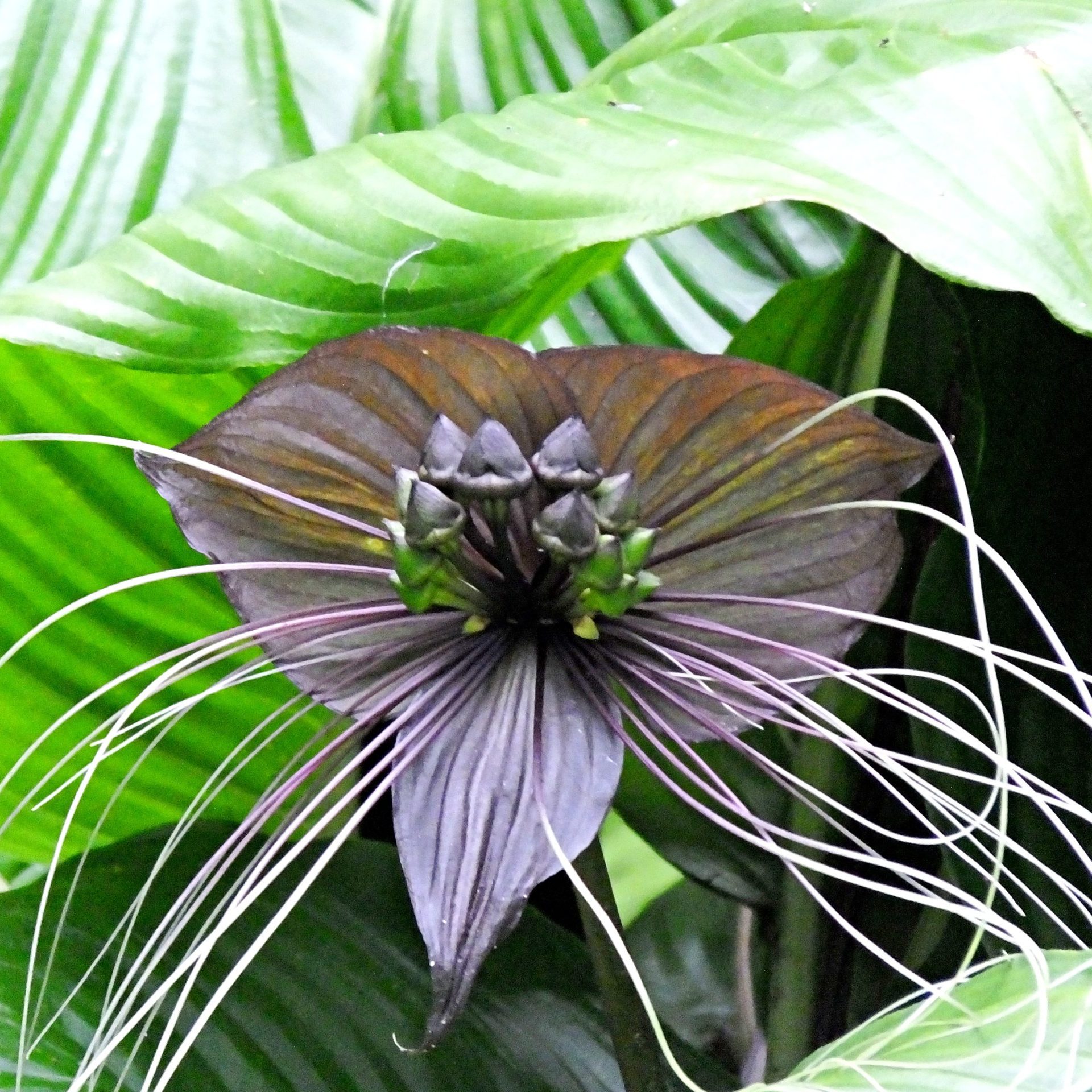Unlock the Magic of Bat Flower Plant: Your Ultimate Care & Growth Guide


The Bat Flower (Tacca chantrieri): The Ultimate Troubleshooting & Mastery Guide
By The Explainer—Breaking Down Every Scenario, From First Leaf to Legendary Blooms
Table of Contents
- Meet the Bat Flower: Why It’s the Unicorn of Houseplants
- Decoding Anatomy: What Makes This Plant a Show-Stopper?
- Starting Strong: How I Set Up for Success (And My Early Mistakes)
- Bat Flower Care—The Complete Playbook
- Every Possible Problem Solved: Troubleshooting Matrix & Real Fixes
- Advanced Moves: Propagation, Reblooming, and Collector Secrets
- Tools That Actually Matter (And the Ones I Ditched)
- Field Notes: Real Stories, Lessons Learned, and “Oops” Moments
- Personal Action Plan: Your Bat Flower Roadmap
- Level Up: Next Steps for the Seriously Obsessed
1. Meet the Bat Flower: Why It’s the Unicorn of Houseplants
If you’ve ever stood in front of a Bat Flower in full bloom, you’ll know it’s not hype—it’s magic. I still remember my first encounter at a botanical garden in Singapore back in 2019; the air was thick with humidity and anticipation as visitors clustered around an unassuming pot… until they spotted those wild, black wings and tendrils that looked like something from a graphic novel.
What sets Tacca chantrieri apart?
It’s pure drama—a gothic masquerade ball among your ferns and philodendrons. Yet behind that intrigue is a plant with very particular needs that can turn even seasoned growers into humble students.
If you’re curious about the deeper meaning behind this plant’s allure, check out The History and Symbolism of the Bat Flower Plant.
2. Decoding Anatomy: What Makes This Plant a Show-Stopper?
Let’s get tactile:
- The “bat wings” are actually bracts—satiny, jet-black or deep purple, sometimes so glossy they reflect light like patent leather shoes.
- “Whiskers” (those legendary bracteoles) hang down up to two feet long; once, mine trailed over the pot edge and startled my cat.
- Flowers cluster at the heart—a science fiction scene in miniature.
- Leaves are lush, almost rubbery to the touch—if conditions are right.
- Rhizomes look like ginger roots but feel firmer; never eat them (they’re toxic).
Unexpected Fact:
If you gently brush your fingers across those whiskers after rain or misting, they feel cool and supple—not delicate as you’d expect!
3. Starting Strong: How I Set Up for Success (And My Early Mistakes)
First Attempt Flop
My initial bat flower came by mail order in January—a rookie mistake in New England! The plant arrived pale and limp; within weeks, root rot set in because I coddled it with too much water and subpar lighting.
Second Time Lucky
I tried again mid-spring from an established grower on Etsy:
- The rhizome was plump as a potato.
- Roots were creamy white—never buy if they’re brown or mushy!
- Leaves were upright, no yellowing.
Immediate lessons:
- Never start with seeds unless you crave frustration—they can take up to two years just to sprout!
- Quarantine new arrivals for two weeks; fungal spores spread fast indoors.
4. Bat Flower Care—The Complete Playbook
Forget vague advice—here’s what works based on trial-and-error:

Potting Mix That Actually Works
After experimenting with five recipes…
Best Blend:
40% fine orchid bark
30% coco coir
20% perlite
10% worm castings
This keeps things airy but moist without turning swampy.
Light
East-facing windows = gold standard indoors.
Outdoors? Dappled shade under something like bamboo or citrus.
Too little light = no blooms.
Too much = leaves crisp like autumn parchment.
For a deeper dive into optimizing your setup, see Ideal Growing Conditions for Bat Flower Plants.
Watering
Finger test always beats moisture meters:
If top inch is dry and leaves begin to lose their shine, water thoroughly until excess drains out bottom.
Winter dormancy? Once every 10–14 days suffices if temps dip below 65°F/18°C.
Humidity
You need >60%. Below that? Expect brown leaf tips—especially if your home runs forced-air heat all winter like mine does.
A $12 digital hygrometer changed everything for me after months of guessing wrong!
Temperature
Sweet spot is 70–80°F / 21–27°C during growth.
Below 55°F / 13°C for more than a night? Prepare for sulking or even death spiral.
Feeding
Every four weeks March–October:
Half-strength liquid fertilizer (I use Dyna-Gro Grow). Overfeeding leads to salt crusts on soil—which nearly killed my second plant until I learned to flush pots quarterly.
Airflow
Stagnant air means fungus gnats—and worse.
Small USB fans work wonders without chilling your plants into hibernation mode.

For more step-by-step guidance on growing indoors, don’t miss How to Care for Bat Flower Plants Indoors.
5. Every Possible Problem Solved: Troubleshooting Matrix & Real Fixes
This section is where most guides fall flat—they cover three issues then wish you luck! Here’s every scenario I’ve faced (and fixed):
| SYMPTOM | CAUSE | WHAT IT LOOKS/FEELS LIKE | FIX THAT WORKED |
|---|---|---|---|
| Yellowing lower leaves | Overwatering OR natural aging | Feels soft/mushy if rotting; crispy if old age | Remove yellowed leaves; adjust watering schedule |
| Brown tips | Low humidity | Edges feel brittle; sounds papery when touched | Humidifier/pebble tray/group plants |
| Leaf curling | Underwatering/cold draft | Roll inward along veins | Check soil moisture/location |
| Faded new growth | Lack of nutrients | Pale green/yellowish color | Resume feeding regimen |
| Black spots | Fungal infection | Spots moist/sticky at first | Prune affected areas; increase airflow |
| Mushy rhizome | Root rot | Smells sour/slimy texture | Cut away rot; repot in fresh mix w/ cinnamon powder dusted on cut surfaces |
| No flowers | Low light/nutrients/dormancy skipped | Healthy foliage but no buds | Move closer to window/increase feeding/observe cool rest period |
Case-in-point:
In late summer last year, sudden yellow patches appeared overnight on two leaves—the culprit was hidden scale insects along petiole bases! A gentle rub-down with cotton swabs dipped in diluted rubbing alcohol did the trick before any major infestation spread.
Don’t underestimate pests:
Spider mites love dry indoor winters; look for fine webs between stems/leaves under bright light. Neem oil mist applied weekly got rid of them without wrecking leaf sheen—but only after washing off webbing first!
If you’re battling persistent infestations or strange spots, see Common Pests and Diseases Affecting Bat Flower Plants for targeted solutions.
6. Advanced Moves: Propagation, Reblooming & Collector Secrets
Division Done Right
Best time? Early spring before active growth starts.
Key insight from my third attempt: Always let divisions air-dry cuts for an hour before repotting (prevents rot). Dust exposed rhizome sections with cinnamon—it works better than commercial fungicides in my experience!
For a full walkthrough on multiplying your collection, check out Propagation Techniques for Bat Flower Plants.
Seed Sowing Reality Check
Expect <20% germination unless you keep seeds at steady warmth/humidity (>75°F/24°C under plastic dome). Even then… patience is measured in calendar pages flipped, not days!
Encouraging Repeat Blooms
Once flowers fade:
- Snip stalks flush with main stem using sterilized scissors.
- Keep up feeding/light consistency—even slight drops stall rebloom attempts.
- Occasionally skip one watering mid-autumn to trigger rest phase—the shock seems to cue flower bud formation next cycle!
Hybrid Hunter Tip:
Join international Facebook groups or rare plant Discord servers—you’ll find hobbyists trading divisions of white-flowered “Tacca integrifolia” forms or even variegated oddities not seen in commerce.
7. Tools That Actually Matter (And the Ones I Ditched)
After years of trying every gadget under the sun:

Must-Haves:
- Digital hygrometer ($12–$25): Stop guessing humidity!
- Fine-tipped pruning shears (Felco #6): For precision snipping spent blooms/leaves.
- Full-spectrum LED grow panel (~$40): For windowless rooms/winter gloom.
- Pebble trays + river stones ($8 DIY): Passive humidity boost near roots.
- Long-handled spoon/fork: Easiest way to aerate compacted soil without root trauma.
Skip These:
Self-watering pots – retain too much moisture for bat flowers’ taste!
Cheap moisture meters – wildly unreliable compared to finger test/trustworthy digital sensors.
8. Field Notes: Real Stories & Lessons Learned (“Oops!” Moments Included)
Maria from NYC: Her secret weapon wasn’t fancy gear—it was restraint during winter dormancy (“I wanted to water every week but forced myself not to!”). End result? Two monster blooms by her birthday in July after six months waiting patiently beside her radiator-humidified east window!
Arjun in Brisbane: Once lost half his collection during a surprise cold snap when nighttime temps dipped below forecast by just four degrees Fahrenheit (“Lesson learned—I invested $50 on an automatic greenhouse heater”).
My own biggest blunder: Trying to cheat dormancy by keeping grow lights on through January… All I got was leggy foliage and zero buds come spring! Now I give them eight weeks of shorter daylight and cooler nights religiously each year—and blooms follow reliably thereafter.
9. Personal Action Plan: Your Bat Flower Roadmap
Ready-to-follow checklist distilled from real-life wins & misses:
- Source healthy division—not seeds—for instant gratification
- Prep custom soil blend as above (ditch bagged “tropical mixes”—too dense)
- Position east/north window—or supplement with LED panel
- Install digital hygrometer nearby
- Water carefully using finger test method ONLY
- Group tropicals together/use pebble tray/humidifier as needed
- Feed monthly March–October at half strength
- Observe dormancy cues December–February by reducing water/temp/light hours
- Prune spent flowers/leaves promptly—with sterilized tools!
- Repot/divide every two years—or whenever roots circle base/pot feels crowded
- Document progress weekly (photos help catch problems early!)
- Tap into online communities—share pics/questions often!
10. Level Up: Next Steps for the Seriously Obsessed
Once your bat flower thrives:
- Experiment cross-pollinating different Tacca species if you snag more than one mature plant (“integrifolia” x “chantrieri” hybrids are rare gold).
- Start journaling environmental tweaks vs bloom cycles—you’ll spot patterns unique to your microclimate/home setup nobody else can teach you!
- Trade divisions locally or online—the thrill of gifting someone their first bloom is unmatched.
- Volunteer observations/photos/data points back into global bat flower forums—you could solve someone else’s challenge halfway around the world!
- Visit public conservatories housing mature Taccas—you’ll pick up tricks just from seeing how pros arrange airflow/light/humidity en masse.
Curious how these flowers reproduce in nature? Read about The Unique Pollination Process of Bat Flower Plants to appreciate their evolutionary quirks.
Above all else? Remember that every failed attempt gets you closer—not further—from mastery over this enigmatic beauty.
Final Thought:
Growing Tacca chantrieri isn’t about perfection—it’s about curiosity paired with careful observation and fearless troubleshooting when things go sideways (and they will). Each new leaf unfurling is proof that magic still lives quietly among us… provided we respect its quirks and learn its language season by season.
If ever you hit a wall—or pull off something amazing—drop me a note or join our growing circle online! There’s always more bat flower wisdom yet uncovered…



